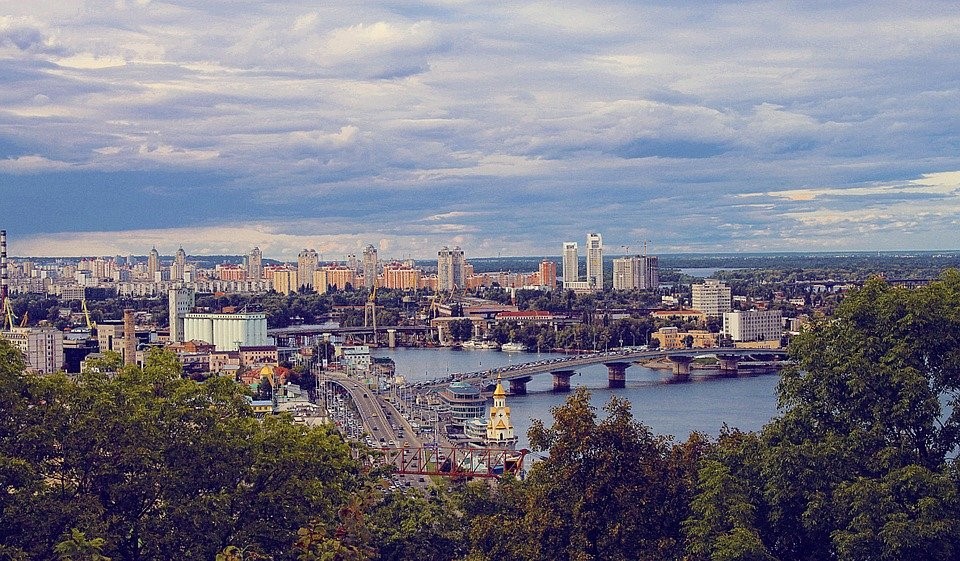As the Russian war of aggression in Ukraine extends from days into weeks, Putin is changing tactics in an attempt to alter the course of the conflict. Turning to terrorist-style tactics aimed at forcing the Ukrainian citizenry into submission, the Russian leader has initiated a campaign of attack against the country’s waterways. While at first glance it may seem an unlikely course of action, Ukraine’s waterways are tightly linked to its critical riparian infrastructure. The Zaporizhzhia nuclear power plant and the Chernobyl exclusion zone are both located on the Dnieper River, or one its important tributaries. It underscores, according to Andrii Ryzhenko of the Jamestown Foundation, an increasingly desperate strategy by Moscow.
In December 2020 Ukraine adopted “On Inland Water Transport,” a policy designed to permit foreign vessels to access the country’s interior waterways with the goal of improving its transportation sector and general economy. Ryzhenko points out that “the government underestimated how much significant and sensitive infrastructure, including power plants, strategic lines of communication, as well as industrial and agricultural sites, lies along the banks of Ukraine’s riverine network.” Putin today is attempting to bring about maximum civilian deaths and ecological damage by destroying structures on or around rivers as his troops get bogged down elsewhere in Ukraine. The pre-war plans to open up the country’s rivers for foreign vessels may end up being “exploited by Russia to deploy and deliver sabotage teams onto government-controlled Ukrainian territory,” he adds. Putin knows Russia will be able to employ personnel or passenger vessels as cover and that they could store and carry substantial quantities of weapons, explosives, or poisonous materials deep into Ukrainian territory. Andrii Ryzhenko is a former Captain in the Ukrainian Navy with over 35 years at sea and ashore. He also worked on Ukrainian Navy transformation to Euro-Atlantic standards and on the contribution to NATO-led operations and NATO Response Forces. He knows the waterways well and argues that the Ukrainian government considered the economic implications of the law but failed to consider security concerns surrounding opening up the country’s waterways.
With Putin’s forces in pitched battles around sensitive areas and indiscriminately shelling and bombing civilian targets, Moscow may soon turn to unconventional warfare out of desperation. Russian operations could significantly damage the Ukrainian economy as well and intimidate its neighboring states into further concessions to Putin. Such sabotage tactics are not new to the Russian autocrat. Since 2014 in the Donbas region and elsewhere in Ukraine Putin has employed diversionary tactics and sabotage. Russia blew up a natural gas pipeline in the Poltava region and destroyed railway bridges in Luhansk. Russia also destroyed military ammunition warehouses in eastern, northern, and central Ukraine. He also ordered the use of assassination as a weapon against Ukrainian military personnel and supporters in Kiev, Odesa, Kherson, Mykolaiv and Mariupol in 2014.
Over the last eight years Russian agents have infiltrated into Ukraine to carry out clandestine missions as they did on August 18, 1941, when they blew up a dam and the Dnipro hydroelectric plant (Dniproges), located on the Dnieper River in Zaporizhzhia. It let loose a 90-foot water wave from the damaged dam that carried away whole villages around Zaporizhzhia and killed around 120,000 people, civilians, and military. As Putin’s war machine churns ahead in fits and starts, or if it gets completely bogged down, we can expect to see more desperate tactics from the Russian leader. “In November 2016, the Security Service of Ukraine detained several people who were preparing to sabotage another nuclear facility, in Zaporizhzhia, the most powerful nuclear power plant in Europe” according to Ryzhenko. Last month the world witnessed Russian forces enter the Chernobyl exclusion zone and they continue to occupy it today. Over a dozen explosions have rocked Ukrainian arms warehouses and arsenals over the last eight years in its eastern and northern regions. Several of those cases of sabotage were alongside navigable rivers and many of them were close to population centers, requiring the evacuation of tens of thousands of Ukrainians residents in the area. Russia is the only likely culprit although the immensity of the explosions destroyed most of the proof.
During a period when Ukrainian forces used only 70,000 tons of ammunition on the front line, these Russian-caused explosions and resulting fires, destroyed 210,000 tons of ammunition. Putin is getting backed into a corner now as the world unites against his unprovoked and aggressive war in Ukraine. He doesn’t have to “go nuclear” to create havoc in Ukraine. The free world needs to recognize Putin remains very dangerous. He could tomorrow put a saboteur on a vessel to do again what he has done in the past as Ukraine is a highly vulnerable nation-state. Putin is not above creating significant civilian casualties, harming the environment, or wrecking Ukraine’s economic infrastructure. This time the world cannot afford to blink.
Daria Novak served in the U.S. State Department
Photo: Kyiv (Pixabay)
